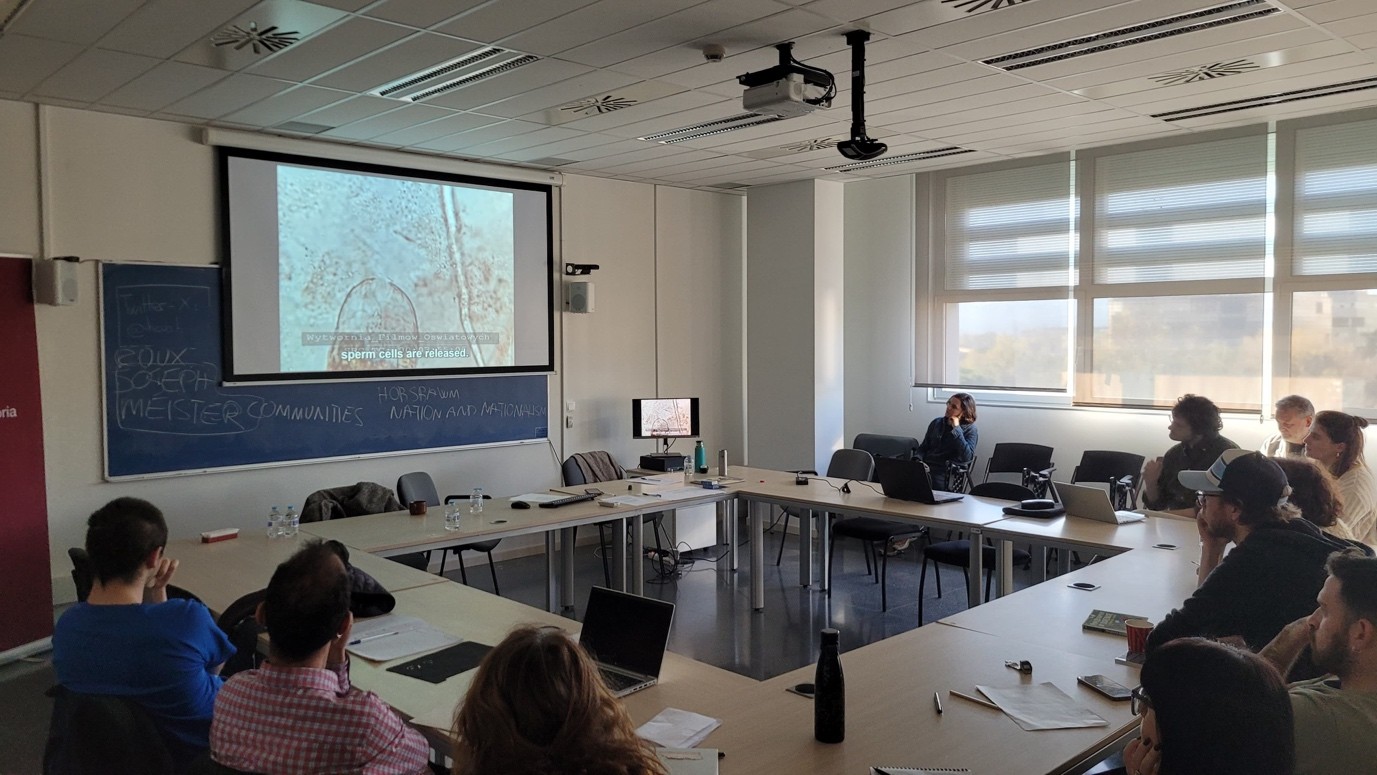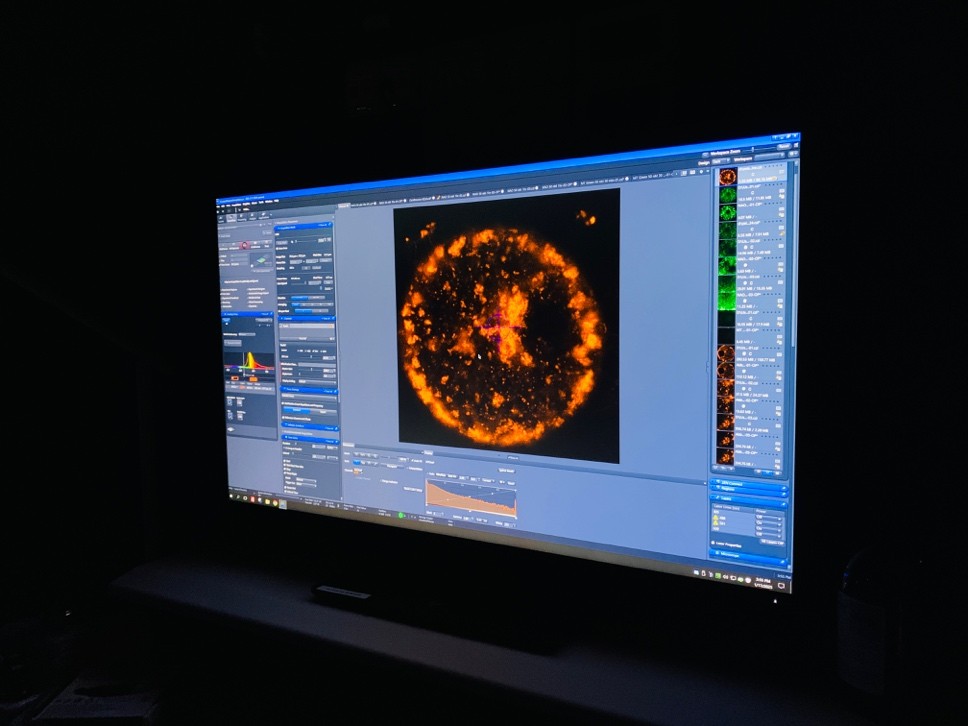Dr. Rebecca Close: Visualising Reproduction Through Science and Art
Posted: 10 June, 2025

My research is all about the role of images in creating knowledge about reproductive biology, and how time-lapse microscopy specifically has historically shaped how we imagine reproductive timing: from understandings of the biological clock to the social structures that influence and manage people’s reproductive decisions and practices over time. This imaging/imagining aspect of reproduction is important in our current ‘fertility crisis times’, when changing reproductive capacities and practices are increasingly represented as a major social and economic problem for countries.
Last month I was invited by Barcelona based video art and film archive HAMACA to give a workshop related to my research and animation practice. In “Animation and the Politics of the Body: Plasticities and Plasmaticities” we watched the first animation film – a chalk drawn stop-motion film titled Fantasmagorie by Emilie Cohl – alongside the first time-lapse microscopy film made by French biologist Jean Comandon of the Syphilis bacteria, both made in 1908. We discussed how animation filmmaking, whether in the scientist’s lab or animator’s studio, is conducive to the analytical study of bodily movement and promotes the empirical gathering of visual data on environments and bodies in a state of constant flux. Exploring examples of the historical and material intersections between scientific and artistic animation traditions, we made short films that register small changes within the image environment, using drawing, sound and animation software to trace minor movements frame to frame.

The time-lapse study of cellular life has been at the centre of major advances in the history of tackling public health crisis, from the Syphilis bacteria films mentioned, which were key to diagnosing and combatting the spread of infection, to the late 1920s studies of the effects of radiation on tumour cells, instrumental in the development of cancer treatment. Key to my project are the time-lapse studies of egg cell maturation spanning the 1930s to the early 1970s that ultimately led to the development of IVF. In Robin Cole’s biochemistry lab in Glasgow in the mid-1960s, animal and later human oocytes (immature egg cells) were studied in vitro and filmed for the first time using a Bolex H16 camera bolted to a Baker Interference microscope. The H16 Bolex camera was, incidentally, the avantgarde filmmaker and artist animators’ tool of choice, assisting in the production of the work feminist filmmakers and animators such as Sally Cruikshank, Barbara Hammer or Margaret Tait. It was great to share some of the archival audiovisual materials key to my project in another fellowship workshop “Time-lapse: Science Film and Cinemicroscopy” co-organised with the scholar of Polish science film Michał Matuszewski. Here we revised the main History of Science and film theory tenets that have situated science and microscopy film production and dissemination across lab, hospital and studio contexts. The workshop was also partnered with LABOCINE, a science film platform who, in October last year, included my previous animation film ”The Wife of Them All” in their online program running parallel to the 17th Annual Science New Wave Festival in New York.

I spent the first part of my outgoing phase in Barcelona visiting reproductive cell biology labs and observing how scientists use time-lapse techniques to see and know more about the oocyte cell today. It was fascinating to see how much has changed since the first time-lapse experiments involving egg cells and today’s diversified oocyte cell biology lab. There now exists a wide array of reliable molecular markers for labelling the physiology of different cell structures and there are ever newer techniques for testing and intervening in development by ‘switching on and off’ cellular functions. I am currently writing up this ethnography work, which will historically situate the experiments I followed and explore how the switch on/switch off mode and hypothetical thinking of the cell biologist materialises in the image optimisation processes I observed. At the centre of my research is the idea that as well as the fertility metrics and demographic statistics that have dominated the public discussion around demographic change in recent years, images and imagination plays a fundamental role in how governments, communities and individuals make decisions about their reproductive practices and plan for the future. Complicating this distinction between ‘imaginative’ images on one side and ‘real’ metrics or hard facts on the other, my fellowship publication ”The Fertility Crisis Imagination (2007-2024)” (Routledge, forthcoming) looks at the imaginative dimension of common fertility metrics and analyses the powerful images that statistical discourse is capable of drawing.

A main problem my research has identified is when the ‘hypothetical thinking’ and ‘switch on/off’ model of intervention – so central to creating knowledge of the cell – is displaced from the cell biology lab and its molecular scale to the population and its human scale. In my recent talk at the Sociological Association Ireland conference, I addressed the limits of this biological mode of hypothetical thinking and the missteps of a switch on/switch off policy solution model for dealing with declining fertility rates in Europe. This is something I will be concentrating more on moving forward as I develop policy recommendations and start production on the film that forms part of the project.